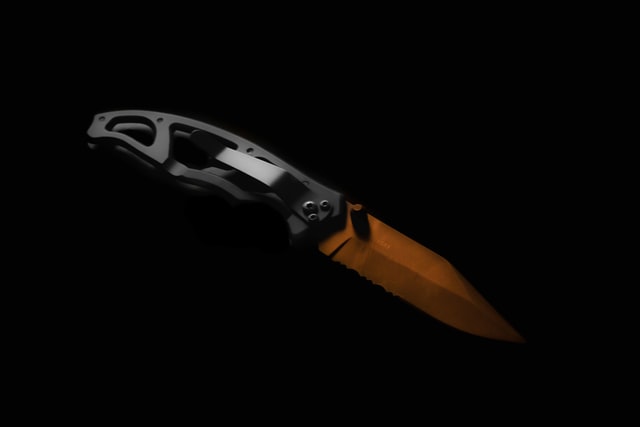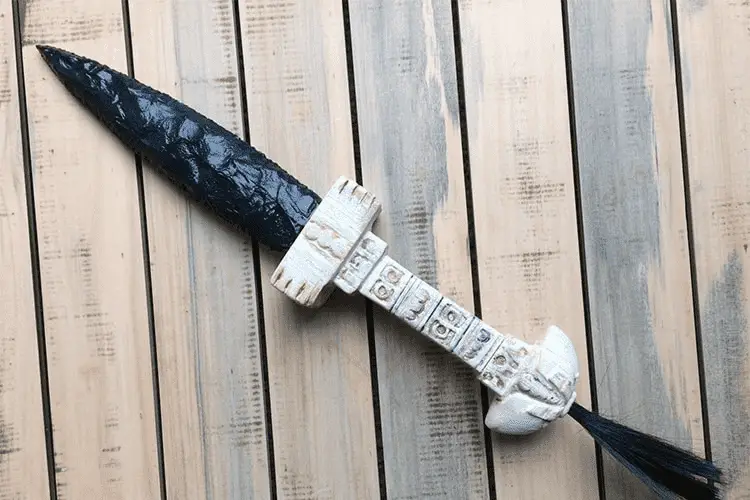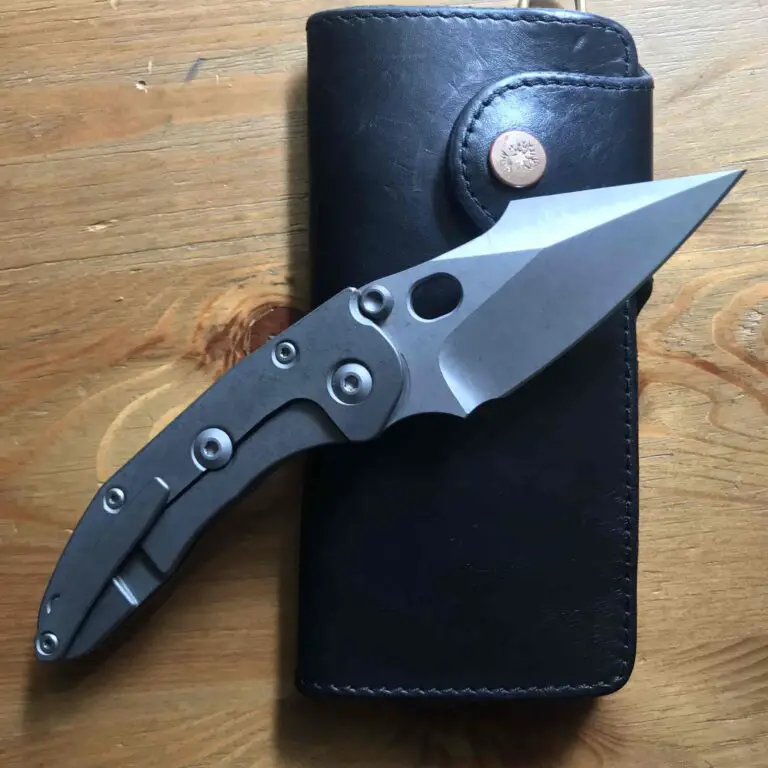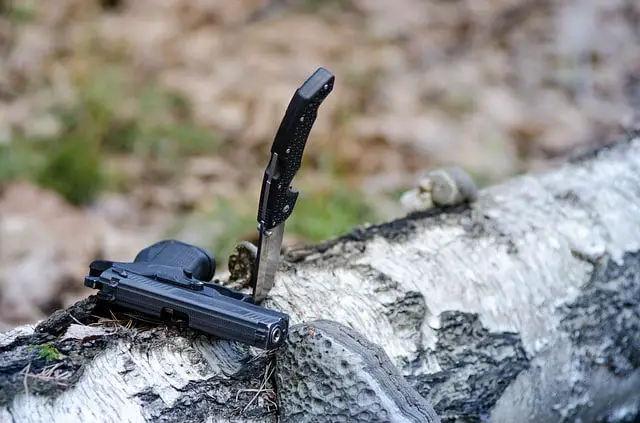The swiss army knives that we see around today could have easily come to be known by another name, only if the American soldiers who were resisting German troops back then could have pronounced the real names. Dubbed “Schweizer Offiziersmesser” (or “Sackmesser,” depending on who you ask), you can also see why they had to give it another name of their own.
So, what is the swiss army knife?
A swiss army knife is a specialty tool consisting of a knife blade and other useful, smaller tools in the same setup. The swiss army knife is the specific multi-tool knife variant issued to Swiss soldiers from 1886 and has gone on to make a mark on knife collections globally.
Table of Contents
Origins of the Swiss Army Knife (SAK)
From the name, you can already guess that the knife came from Switzerland – or other regions with the Swiss dubbing.
While that is not untrue, the history of these knives is a little bit more interesting than that.
The first SAKs
The first official Swiss Army Knives were not multi-tools like what we have today.
The swiss army officials wanted their soldiers to have knives that made opening canned food and cleaning their rifles, among other things, easier. The choice here was a simple folding knife that got the job done without fuss.
Since there were no Swiss companies to fill the order at that time, the contract went to a German firm – Wester & Co. This initial order of 15,000 knives was so successful that it caught the attention of Karl Elsener, who decided to make the same knives in the home country.
Enter Karl Elsener’s Knives
Karl Elsener was no stranger to manufacturing, given that he already had a company that produced surgical equipment at the time he decided to get into the pocket knife game.
Being in Switzerland also made it easier for him to land the contract to locally produce these knives (known as Modell 1890).
Starting in 1891, Karl began producing these knives in the country.
But, he was not satisfied with the basic functionality of the blade and wanted a folding knife that could do so much more. This led to a setup (in 1896) that had a knife blade and some other tools attached to the same hinge.
The innovative new knife caught on, so Karl started to add more features to the knife. As early as 1897, he brought on a smaller blade, corkscrew, and wood fiber grips, among other things.
At the time of making these knives, the military contract was still sticking to the basic knives. So, again, they were not known as the official swiss army knives back then. They were, at best, only variants of the main knife.
Improved Competition in the Market
Since Karl has been able to bring the contract home, it was not long before another company came to challenge the monopoly. Thus, by 1893, Wenger (known as Paul Boechat & Cie at the time) also secured a contract to supply the army with the original Modell 1890 knives.
However, even though both companies were not the same, they used the same cross in a square box (shield) insignia on these knives. Since they were not making the knives for sale to the general public but under a contract, it makes sense that the government will want a sense of uniformity.
Karl’s company – which would later change its name to Victorinox – bought the Wenger company in 2005 after having split the Swiss Army Knives contract with them since 1908.
Functionality
SAKs have retained their functionality for both the military and civilian population for years now.
It is surprising to note that this simple tool is still a staple of military gear in Switzerland – and other parts of the world. Thus, military recruits will get a standard-issue SAK once they begin their service in Switzerland.
Switzerland also has a law that mandates men to join the military service, even if for a brief stint, once they reach adulthood. These men will all get a standard-issue SAK too.
Such widespread usage and application – among those men that quit the military life to continue their civilian living too – has helped to keep the knives both relevant and popular till this day.
Where are the Swiss Army Knives made today?

Swiss manufacturers like Victorinox retain and maintain their affiliations to the country. Thus, the knives are still made in-country.
The idea of having these Swiss-made knives is to ensure that the Swiss army is not reliant on German knives. Today, Victorinox is the official supplier of knives to the German army too.
At the Ibach factory where Victorinox now hosts its headquarters, it is reported that some 34,000 knives leave the facility daily. It is even more surprising that the vast majority of these knives are not used in-country but shipped to over 100 nations of the world.
If anything, it doesn’t seem like the demand for these knives is going down anytime soon.
PS Did you know that Karl Elsener named the company after his mother, Victoria, when she passed? With ‘inox’ being the name for steel, a combination of Victoria and Inox (when the company started using stainless steel) gave the new company name that we all know today.
How are swiss army knives made?
If you have ever held or used a Swiss Army Knife, you will agree that they are well made.
Especially if you invest a good amount into the knife upfront.
Getting that seemingly small yet highly useful tool into your hand did have a lot of processes behind it, though.
Looking behind the scenes at the official Victorinox factory, here is a sneak peek into how that knife comes together.
What parts can you expect on a Swiss Army Knife?
There are hundreds of SAK models in the world right now. I cannot even begin to talk about the extras that come with each one.
One thing that I have observed is that these knives are now specialty made for certain classes of people too, besides the general builds.
For example, you will find SAKs best suited to:
- Hunters – check out this compact Victorinox Champ SAK with 33 functions.
- Campers – see the eco-friendly Victorinox EvoWood SAK, for example
- Computer repairers – I’d recommend this 11-function Victorinox Swiss Army Manager knife (comes with a ballpoint pen too)
- Golfers – pick up this WorkChamp XL SAK from Victorinox
- Handymen – you’ll enjoy all 33 tools on the SwissChamp Multi-Tool Knife, from Victorinox too.
… and more.
The kind of user that the knife had in mind during production will determine what features you can expect on it. Generally, I would think these are some of the most commonly occurring features:
- The knife blade itself
- Scissors
- Pliers
- Screwdriver
- Saw
- Compass
- Small blade
- Nail file
- Nail cleaner
- Fish scaler
- Flashlight
- UBS drive, etc.
What is a Swiss Army Knife Used for?

Following from the section above, the usage of your swiss army knife is dependent on what kind of SAK you get and the parts on it too.
Some of the most common uses of a swiss army knife are:
- Looking cool – trust me, this is valid. As long as you are within the open/ concealed carry laws, anyway.
- Opening a can
- Sawing small wood
- Loosening screws
- Flashlight in low light situations
- Picking a lock
- Stripping wires
- Key attachments
- Cleaning your nails
- Trimming/ cutting your nails
- Storing data securely (for SAKs with drive attachments)
- Toothpick
- Chiseling
- Removing bottle corks
That is by no means an exhaustive list, but it tells you that a SAK can do a lot of things.
There are some digital models around today (see this Victorinox Traveler Lite SAK) that take altimeter readings, are great for barometer measurements, and also pack a thermometer.
I would suggest such a model for someone that goes camping, hiking, or spends a lot of time outdoors generally. The screen also works for telling the time, but that’s not why you’ll be using it when you have a watch.
Getting One Today?
I know I’d be excited to have one of these knives if I just learned about the rich history and all the amazing things that it could do too.
If you were wondering which one to get between this SAK and a standard folding knife, I have written a comparison guide here that would help you to make a better decision.
Likewise, don’t forget to go through this guide to clean your swiss army knives effectively and make sure they last for longer.
With that, I believe we have covered everything you need to know: from what a swiss army knife is to why it could be the next best multi-tool to add to your arsenal.
Sources:
Swiss Army Knife Uses – https://www.swiss-knife.com/en/functions








